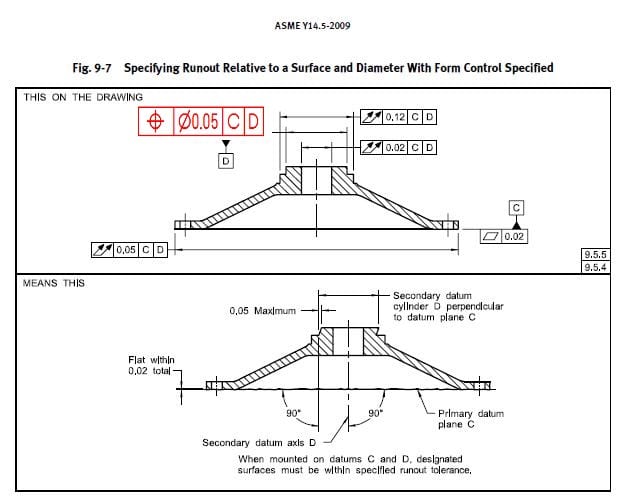greenimi
Mechanical
- Nov 30, 2011
- 2,391
Fig 9-7 / ASME Y14.5-2009
If total runout defining datum feature D is replaced by position callout would you consider that the newly created position to be self-referencing (and hence not valid)?
Reasoning: I am thinking that position is checking the UAME and since D is secondary in the FCF than RAME is the one coming to play.
 (Disclaimer: I am not saying that I would apply such callout, but I am just questioning its legality and validity, not its functionality)
(Disclaimer: I am not saying that I would apply such callout, but I am just questioning its legality and validity, not its functionality)
If total runout defining datum feature D is replaced by position callout would you consider that the newly created position to be self-referencing (and hence not valid)?
Reasoning: I am thinking that position is checking the UAME and since D is secondary in the FCF than RAME is the one coming to play.

